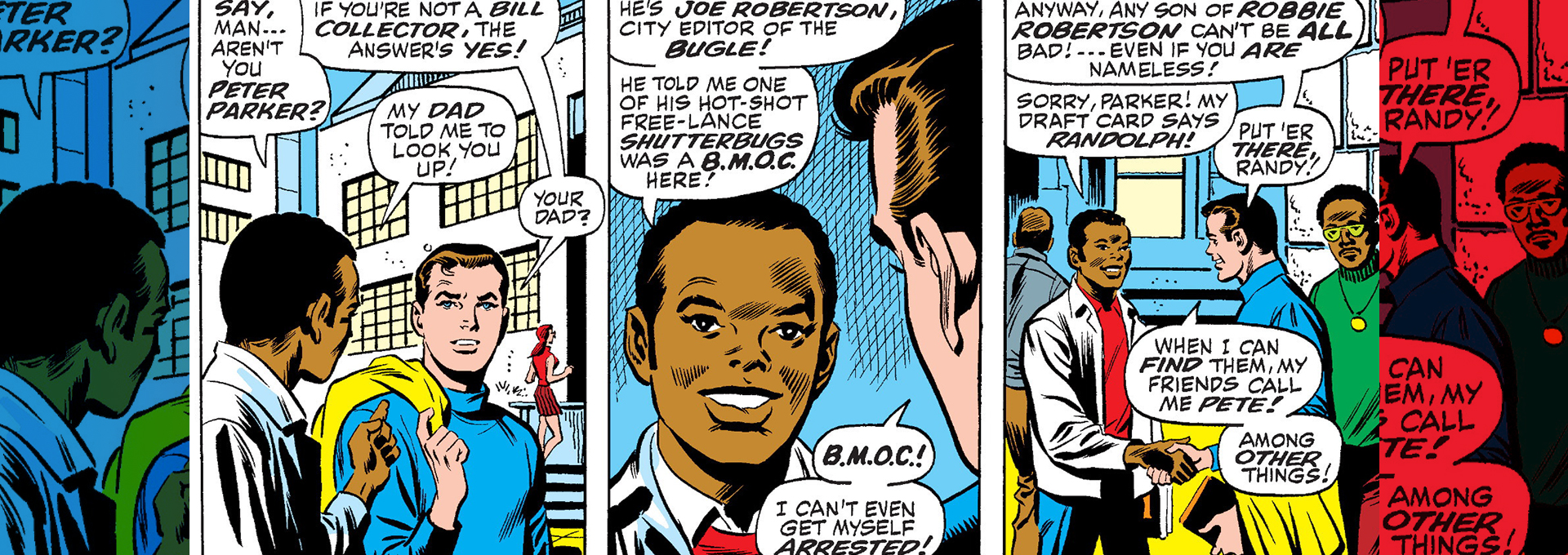Stan Lee helped bring major black heroes to the forefront of comics with the Black Panther, co-created with Jack Kirby, on the pages of Fantastic Four #52 in 1966, and then with the Falcon, co-created with Gene Colan, in Captain America #117 three years later.
As Cap’s best friend and eventual superhero partner, the Falcon even shared the comicbook’s title, Captain America and the Falcon, from 1971 to 1978. Stan has been acknowledged for these great steps towards racial equality in comics.
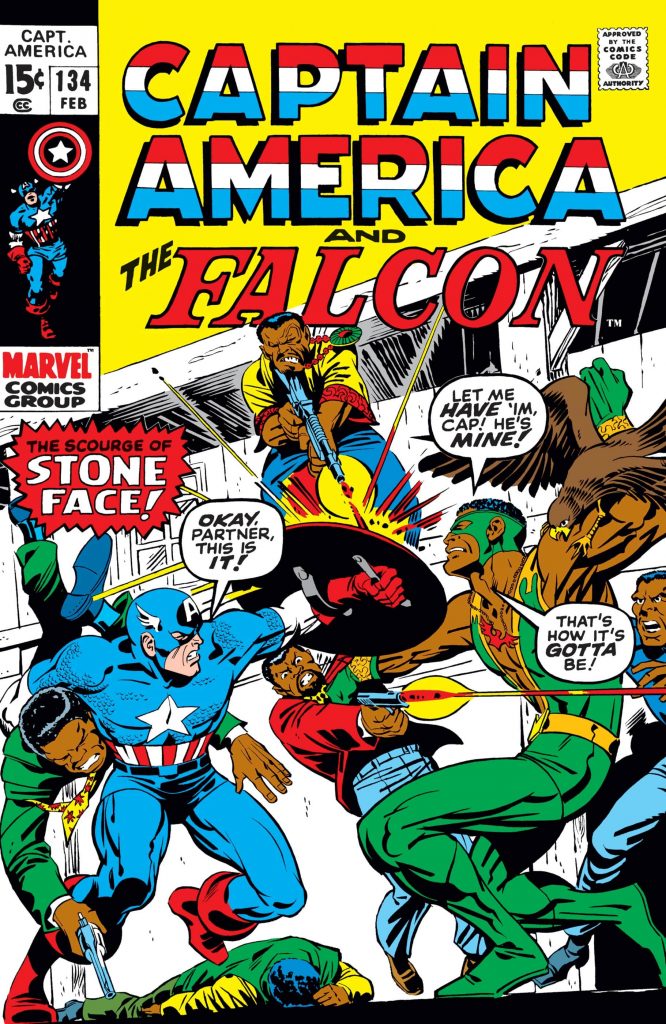
However, these were front-line, attention garnering heroes. Stan also built up a few African American characters in a much subtler way, as support characters in the many Marvel titles he wrote, particularly in Spider-Man in the late 1960s.
Such was the case with Joe “Robbie” Robertson, co-created by John Romita Sr., who debuted in The Amazing Spider-Man #51 in 1967. Spidey’s supporting cast was growing in the late 60’s, including family, friends, roommates and bosses. Each one added more complications to Peter Parker’s life as he pursued his career as a photographer, attended Empire State University (ESU) and fought crime as Spider-Man. The Daily Bugle’s publisher J. Jonah Jameson remained a thorn in Spidey’s public side throughout, but Joe Robertson, Jonah’s hand-picked city editor whom he nicknamed “Robbie,” proved to be more of ally to our much put-upon friendly neighborhood Spider-Man. He was the only man at the Bugle who could and did say “no” to Jonah. Though he let Jonah publicly air his opinions about Spider-Man, Robbie made sure the Bugle’s news stories about Spidey were journalistic fact and not too swayed by its publisher’s anti-Spider-Man stance. As the years went by, Robbie also served Peter as a kind of father figure, his wisdom not only guiding Jonah, but also the talented young news photographer.
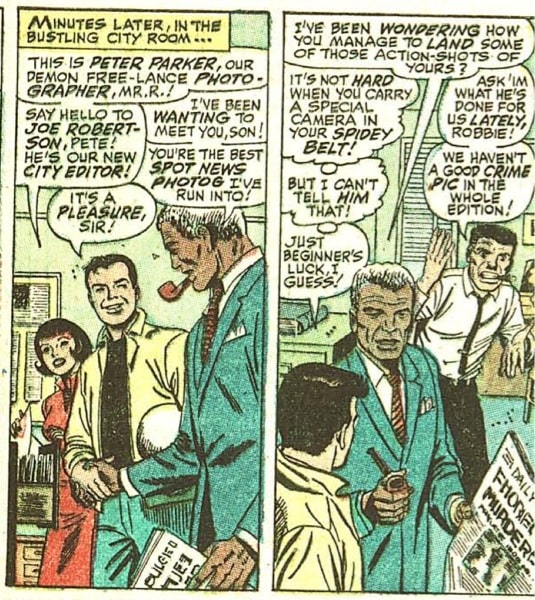
And one could guess that Robbie had some idea of Peter’s secret identity, but he never broached the subject. This allowed the necessary distance for the Bugle to write factual stories about the web-slinger without sacrificing journalistic integrity.
Robbie also had a son, Randy, introduced by Stan and John Romita Sr. in Amazing Spider-Man #67 in 1968. A year younger than Peter, Randy was a civil rights activist student at ESU who befriended Peter. Unfortunately, Peter’s double life didn’t allow him to dedicate his time to activism like Randy, though one could argue that Peter’s efforts as Spider-Man to stop crime were just as important to social change.
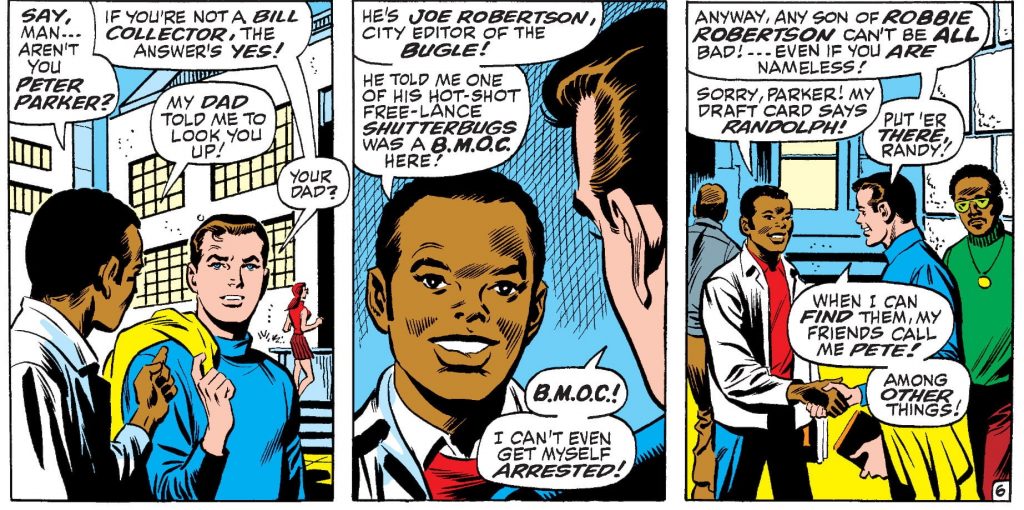
But no fuss or fanfare was made about Peter’s friendship and respect for two prominent African-Americans in his life. It was simply part of the story, a story doubtless familiar to what many of Marvel’s readers experienced as they lived through the civil rights movements of that time.
Another important story of the time was the introduction of the original Prowler in Amazing Spider-Man #78 in 1969.
Created by Stan, John Buscema and Jim Mooney, Hobie Brown was a promising young African American engineering prospect who was unfairly fired from a job. He let his rage get the better of him and used his skills to create the Prowler suit and persona and rob the Daily Bugle. Spider-Man stops him and during the fight, Prowler thinks he’s killed Spider-Man. This shocks the young man and his innate morality comes to the fore.
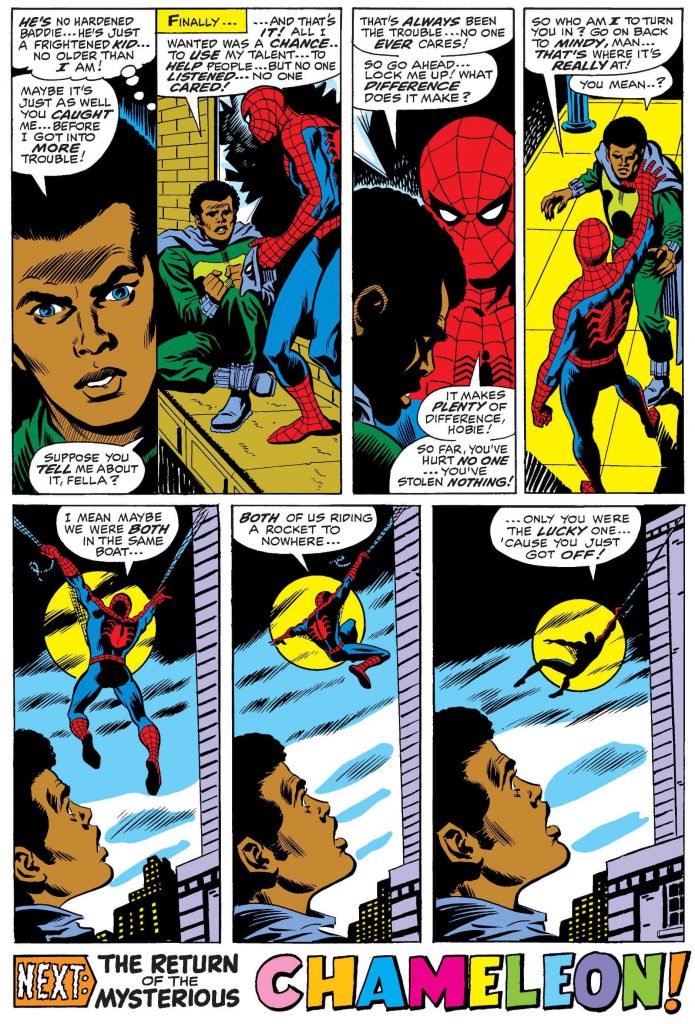
Soon after, Spider-Man confronts the Prowler, demonstrating he’s far from dead, and helps the young man follow through on his positive turn of heart. In fact, later when Hobie thinks Spidey might have been responsible for the death of retired police captain George Stacy, he uses his Prowler suit and powers to try to capture Spidey. Fortunately for Spidey, he convinces Hobie of his innocence.
These stories set precedents that slowly but surely introduced more African American characters into comics, whether as heroes, villains, or simply support players. In tune with his times, Stan made it clear that the African American experience was an important inclusion to reflect our real world, and that compelling stories can and should be told that feature diverse characters.


